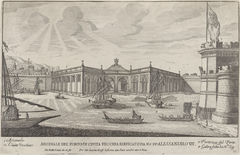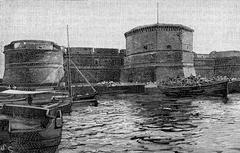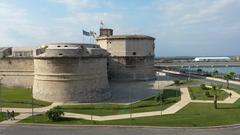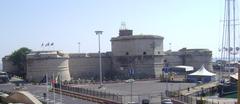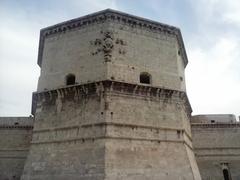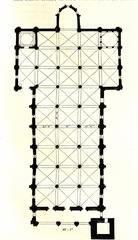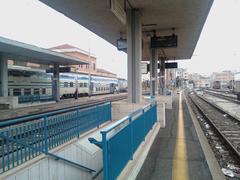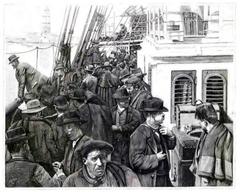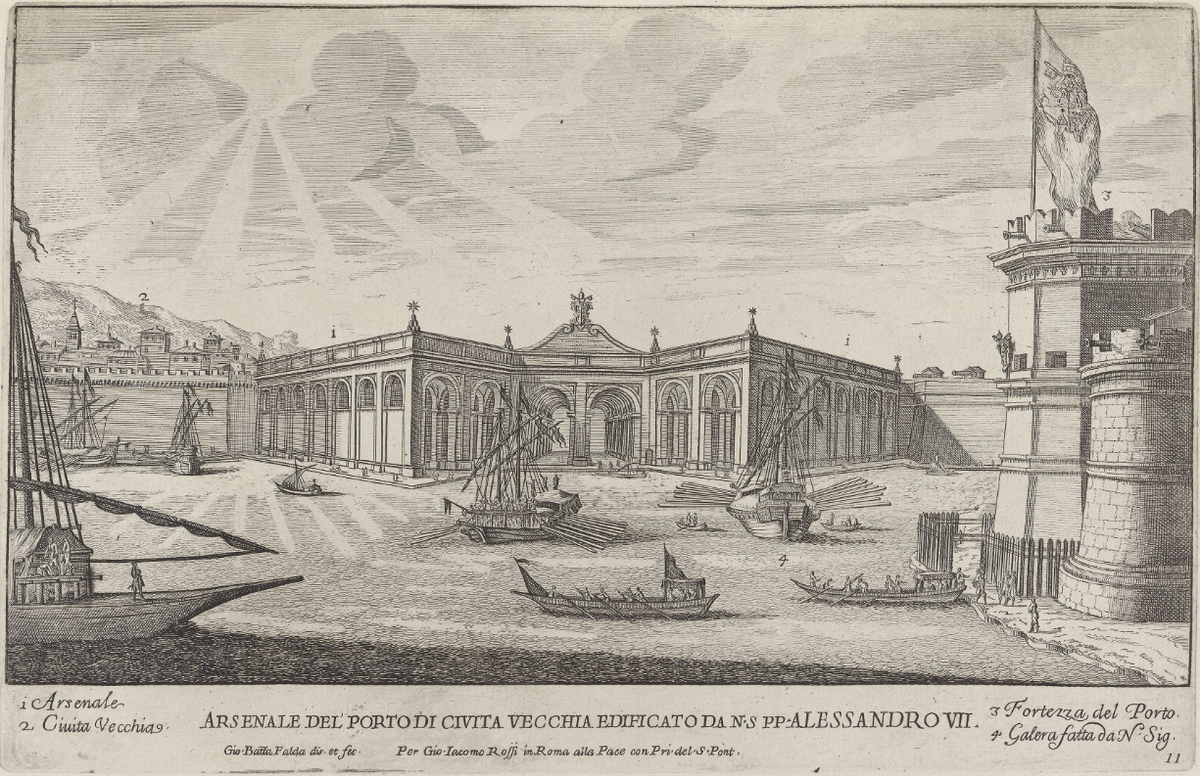
Visiting Forte Michelangelo: Hours, Tickets, and Tips for Civitavecchia’s Historical Site
Date: 24/07/2024
Introduction
Forte Michelangelo, an architectural masterpiece located in Civitavecchia, Italy, is a historical fortress that has stood the test of time. This imposing structure, commissioned by Pope Julius II in the early 16th century, was initially designed to protect the strategic Port of Civitavecchia from pirate incursions (Port Mobility Civitavecchia). With contributions from renowned architects such as Donato Bramante and Michelangelo Buonarroti, the fortress showcases the architectural brilliance and strategic military foresight of the Renaissance period (Atlas Obscura).
The site of Forte Michelangelo has a rich historical tapestry, dating back to the era of Emperor Trajan around 110 AD when it served as a significant Roman port. Throughout the centuries, it has undergone numerous reconstructions and enhancements, especially during the medieval period when it was under the control of the prefects of Vico and later the State of the Church (Port of Rome).
Today, Forte Michelangelo stands not only as a monument of military and architectural significance but also as a cultural and religious landmark. The Santa Ferma tower, housing a chapel dedicated to Santa Fermina, the patron saint of Civitavecchia, highlights the fortress’s role in the local cultural heritage. Visitors can explore its rich history, architectural marvels, and enjoy the scenic beauty of the surrounding areas (Port Mobility Civitavecchia).
Table of Contents
- Historical Background of Forte Michelangelo
- Visitor Information
- Nearby Attractions
- Accessibility
- Frequently Asked Questions (FAQ)
- Call to Action
Historical Background of Forte Michelangelo
Origins and Early History
Forte Michelangelo, located in Civitavecchia, Italy, stands as a testament to the region’s rich historical tapestry. The site where the fortress now stands has been of strategic importance since ancient times. Initially, it was the location of Roman buildings dating back to the era of Emperor Trajan, around 110 AD. This port was active until the sixth century and continued to be significant until the mid-ninth century when it was destroyed by Saracen invasions (Port of Rome).
Medieval Period
Following the Saracen destruction, the area was rebuilt and re-founded under the name Centumcellae, which later evolved into Civitas Vetula. For two centuries, it was under the control of the powerful prefects of Vico. In 1431, the region transitioned to the State of the Church, marking the beginning of significant developments in the harbor, including the construction of new docks and fortifications (Port Mobility Civitavecchia).
Renaissance Construction
The construction of Forte Michelangelo began in 1508, commissioned by Pope Julius II della Rovere. The project was initially entrusted to Donato Bramante, a renowned architect of the time. The primary purpose of the fortress was to defend the Port of Civitavecchia from pirate incursions, which were a constant threat during the fifteenth century (Atlas Obscura).
Architectural Contributions
The fortress is named after Michelangelo di Lodovico Buonarroti Simoni, who contributed to its design. Michelangelo was responsible for the elevated section of the fort, which includes the imposing octagonal tower known as the “maschio.” This tower, completed in 1535, features the papal coat of arms of Pope Paul III Farnese, symbolizing the fort’s completion under his papacy (Port Mobility Civitavecchia).
Structural Details
Forte Michelangelo is a quadrilateral structure fortified by four cylindrical towers at its corners. The East tower prominently displays the coat of arms of Pope Julius II, an oak tree, marking the spot where the Pope blessed and laid the first stone on December 14, 1508. The fortress also includes a large rectangular courtyard with arcades on pillars and pilasters, where recent excavations have uncovered significant archaeological sites (Port of Rome).
Military Significance
Throughout its history, Forte Michelangelo has served various military purposes. The fort’s design includes numerous bunkers and loopholes for shooting stations, reflecting its primary role as a defensive structure. The underground passage beneath the San Sebastiano tower, a secret escape route towards the inland, further underscores its strategic importance (Port Mobility Civitavecchia).
Renaissance to Modern Era
The fortress continued to play a crucial role in the defense of Civitavecchia and its port through the Renaissance and into the modern era. It has witnessed numerous historical events and has been a focal point in the region’s military history. Today, Forte Michelangelo serves as the headquarters of the Captaincy of the Port and remains a military zone. However, the outer walls and surrounding areas have been renovated, creating an attractive walkway with decorative moats and sculptures (Atlas Obscura).
Recent Developments
In recent years, significant requalification works have been undertaken to preserve and enhance Forte Michelangelo. These efforts, strongly supported by the Port Authorities and supervised by relevant authorities, aim to maintain the historical integrity of the fortress while making it accessible to the public. Visitors can now enjoy a pedestrian promenade circumnavigating the fort, characterized by wide flowerbeds and a charming stretch of water reminiscent of the sea that once lapped its walls (Port Mobility Civitavecchia).
Cultural and Religious Significance
Forte Michelangelo also holds cultural and religious significance. The Santa Ferma tower houses a small chapel dedicated to Santa Fermina, the patron saint of Civitavecchia. This chapel is located in a cave where the saint is believed to have found shelter. The city celebrates Santa Fermina with a recurring event on April 28th each year, highlighting the fortress’s role in the local cultural heritage (Port Mobility Civitavecchia).
Visitor Experience
While the fortress is primarily a military zone, visitors can explore the inner square of Forte Michelangelo during specific hours on weekends. The site is easily accessible from the Civitavecchia Train Station, making it a convenient destination for tourists. The recent renovations and the addition of the pedestrian promenade have enhanced the visitor experience, offering a blend of historical exploration and scenic beauty (Port Mobility Civitavecchia).
Visitor Information
Opening Hours and Ticket Prices
Forte Michelangelo is open to visitors on weekends from 10:00 AM to 6:00 PM. Admission is free, but guided tours are available for a small fee. Special events and temporary exhibitions may have different hours and costs.
Travel Tips
- Access: The fortress is a short walk from the Civitavecchia Train Station. Parking is available nearby for those arriving by car.
- Weather: Check the weather forecast before your visit, as the site is primarily outdoors.
- What to Bring: Comfortable walking shoes, a camera, and water are recommended.
Nearby Attractions
- Terme Taurine: Ancient Roman baths located a short drive from the fortress.
- Civitavecchia Port: Explore the bustling port area with shops and restaurants.
- Aquafelix: A popular water park for families, located nearby.
Accessibility
While the pedestrian promenade around Forte Michelangelo is wheelchair accessible, certain sections of the fortress, including the underground passages and upper towers, may be challenging for visitors with mobility issues.
Frequently Asked Questions (FAQ)
Q: What are the visiting hours for Forte Michelangelo? A: The fortress is open on weekends from 10:00 AM to 6:00 PM.
Q: Is there an entrance fee? A: Admission is free, but guided tours may have a small fee.
Q: How can I get to Forte Michelangelo? A: The site is easily accessible from the Civitavecchia Train Station, and parking is available for those driving.
Q: Are there guided tours available? A: Yes, guided tours are available for a small fee.
Q: Is Forte Michelangelo wheelchair accessible? A: The promenade is accessible, but some areas of the fortress may be challenging for those with mobility issues.
Call to Action
Explore the rich history and architectural grandeur of Forte Michelangelo. Download our mobile app Audiala for more detailed guides, check out related posts on our website, and follow us on social media for updates and more travel tips!
Summary and Conclusion
Forte Michelangelo is a striking example of Renaissance military architecture, combining historical significance with cultural heritage. Its robust structure, designed by some of the most illustrious architects of the time, served as a crucial defense mechanism for the Port of Civitavecchia, safeguarding it from pirate attacks and other threats (Renato Prosciutto).
Today, Forte Michelangelo continues to captivate visitors with its historical depth and architectural grandeur. The fortress provides an insightful glimpse into the past, from its Roman origins to its role in the Renaissance and beyond. Recent renovations have made it more accessible, allowing tourists to explore its outer walls and surrounding areas, which have been beautifully restored to create an attractive walkway with decorative moats and sculptures (Port Mobility Civitavecchia).
As you plan your visit, take advantage of guided tours to delve deeper into the fortress’s history, and explore nearby attractions such as the Terme Taurine and the bustling Civitavecchia Port. Whether you’re a history enthusiast or a casual traveler, Forte Michelangelo offers a unique and enriching experience that beautifully blends the past with the present (Travopo).
References
- Port Mobility Civitavecchia. (n.d.). Forte Michelangelo. https://civitavecchia.portmobility.it/en/fort-michelangelo
- Port of Rome. (n.d.). Forte Michelangelo. https://www.portofrome.it/forte-michelangelo/?lang=en
- Atlas Obscura. (n.d.). Fort Michelangelo. https://www.atlasobscura.com/places/fort-michelangelo-italy
- Renato Prosciutto. (n.d.). Forte Michelangelo Civitavecchia. https://renatoprosciutto.com/forte-michelangelo-civitavecchia/
- Travopo. (n.d.). Civitavecchia Travel Guides. https://travopo.com/travel-guides/italy/civitavecchia/
